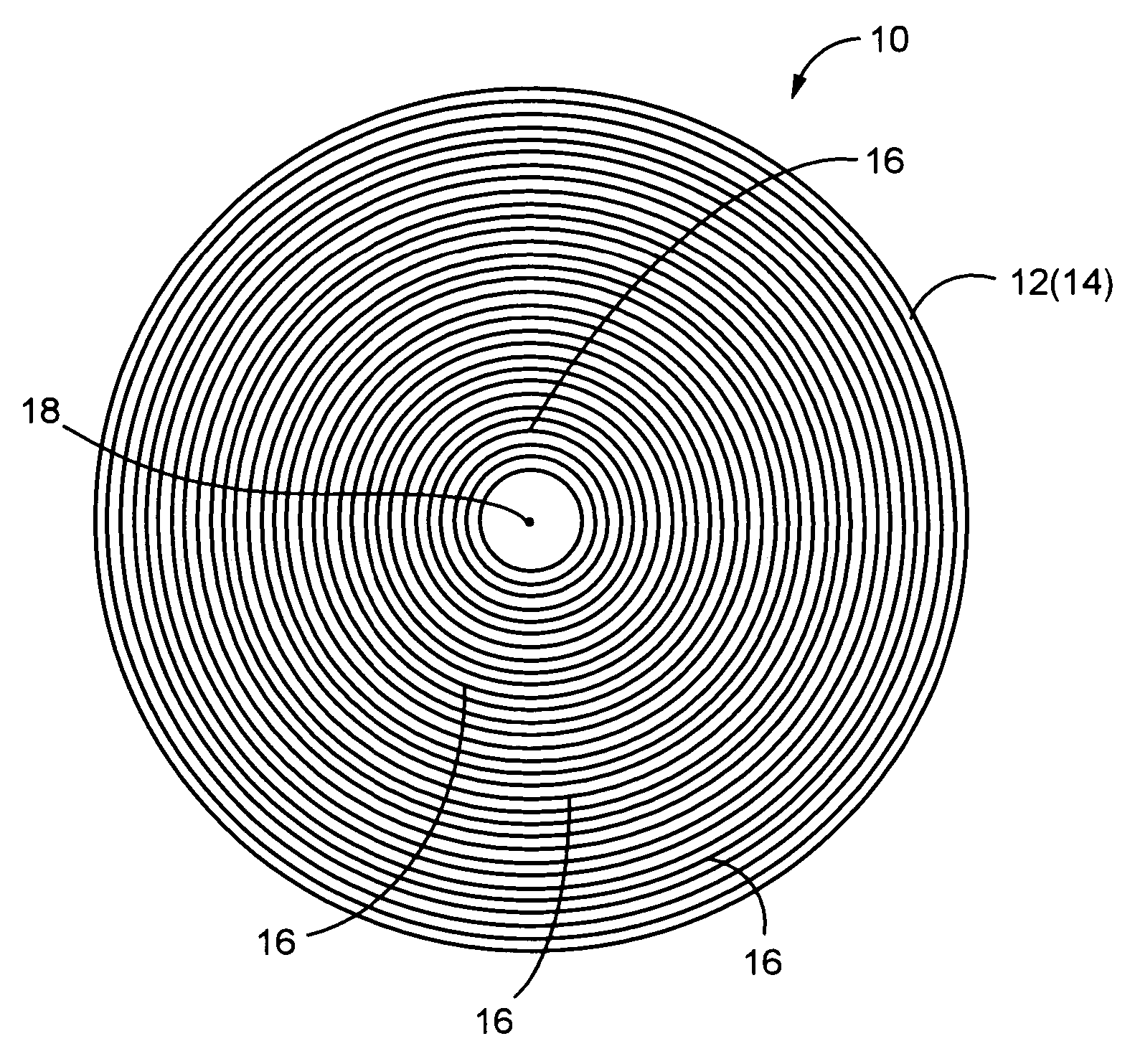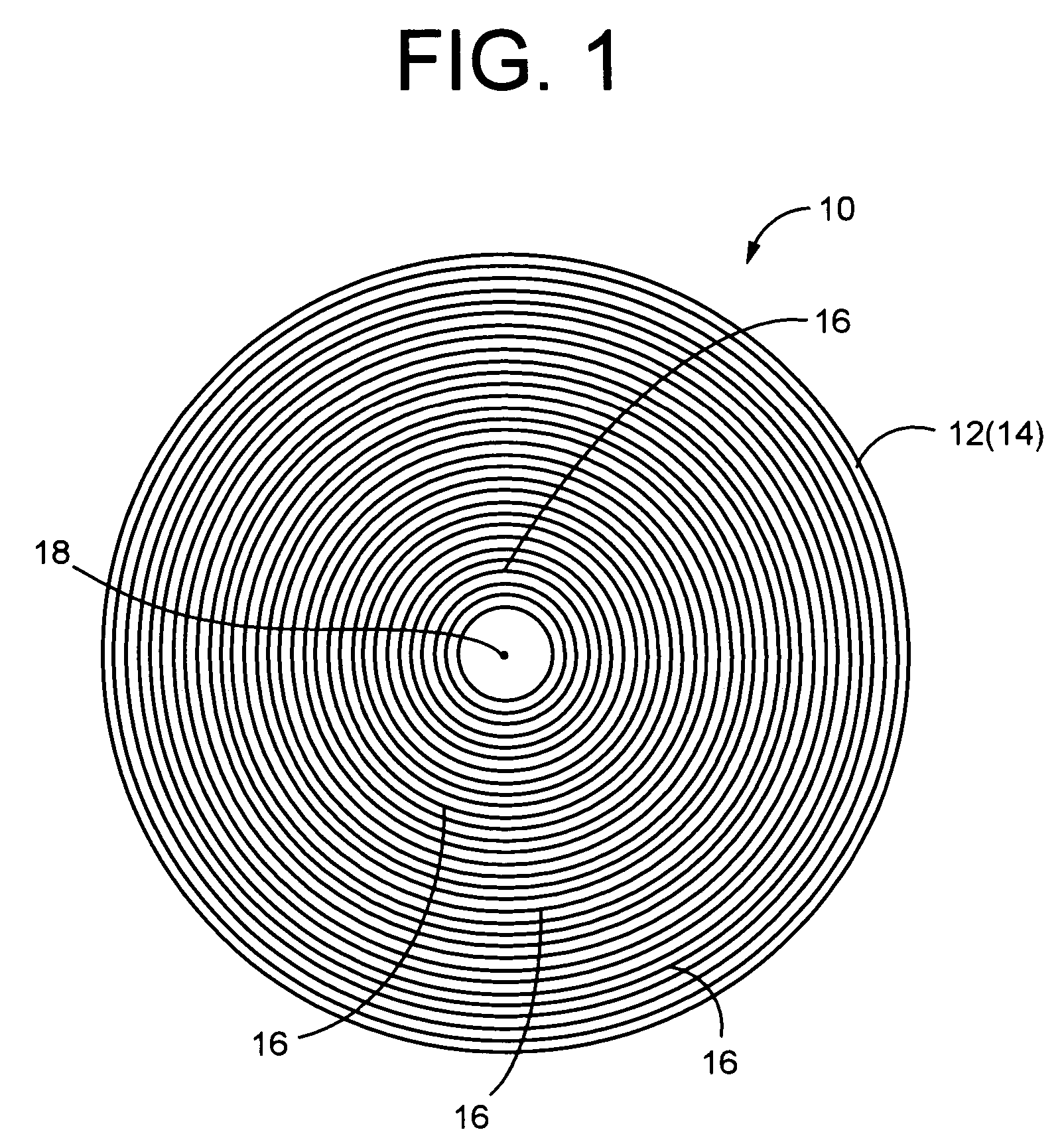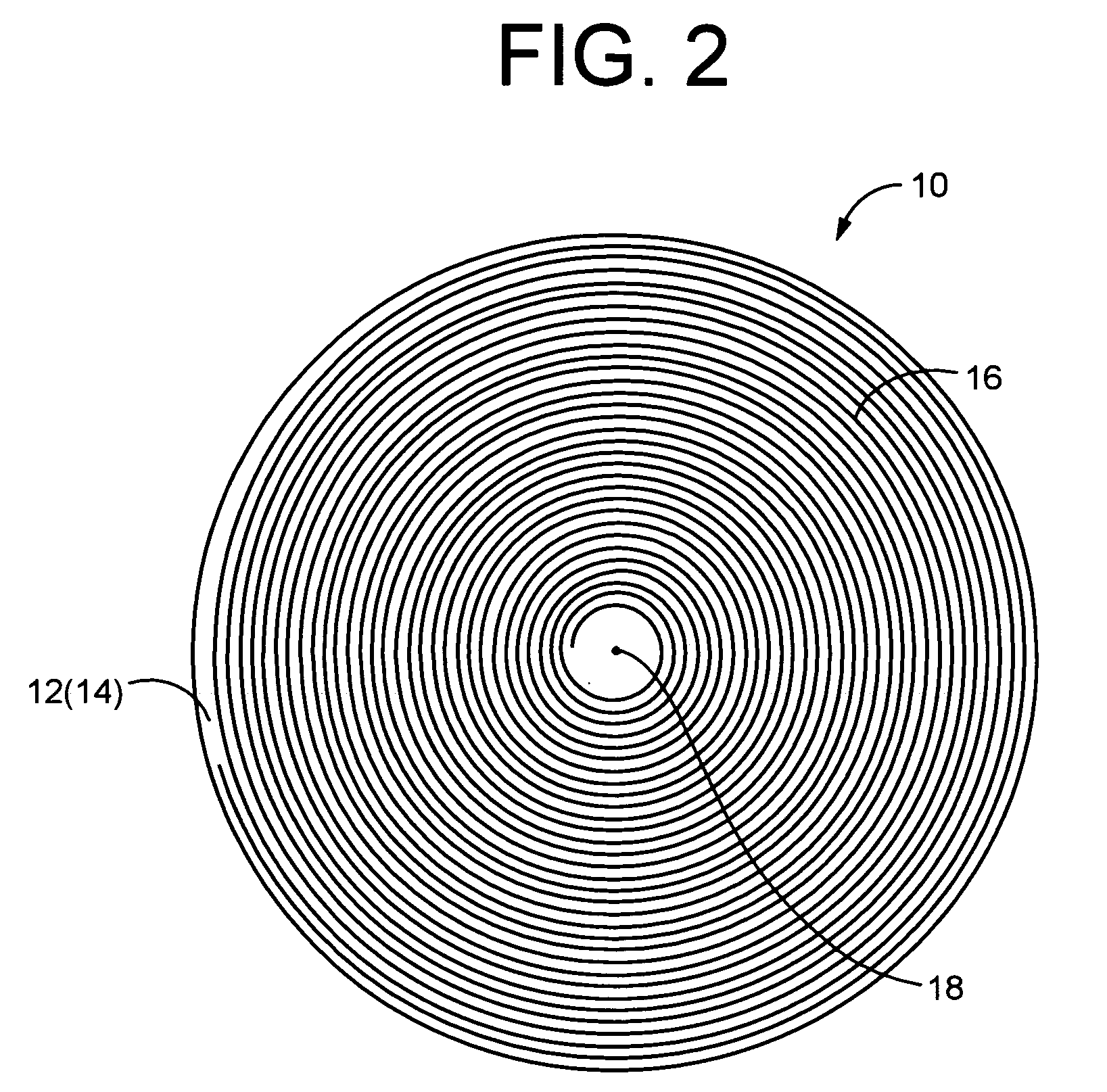Polishing pad and method of fabricating semiconductor substrate using the pad
a technology of polishing pad and semiconductor substrate, which is applied in the field of polishing pad, can solve the problems of inconsistent polishing performance, high cost, and difficulty in practical use, and achieve the effects of improving the precision and shape consistency of the inside surface, high dimensional precision or accuracy, and high precision
- Summary
- Abstract
- Description
- Claims
- Application Information
AI Technical Summary
Benefits of technology
Problems solved by technology
Method used
Image
Examples
Embodiment Construction
[0067]There will be described in detail preferred embodiments of the invention with reference to accompanying drawings in order to further clarify the present invention.
[0068]Referring first to FIG. 1, shown is a polishing pad 10 of construction according to a first embodiment of the present invention. The polishing pad 10 is constituted by a thin disk pad substrate 12 having a constant thickness dimension T overall. The pad substrate 12 is advantageously formed of rigid expanded urethane, for example. The pad thickness dimension is not particularly limited, and may be selected appropriately depending not only on the material of the pad substrate 12 but also the material of the wafer being polished, the required degree of polishing precision, and the like.
[0069]One surface 14 of the pad substrate 12, serving as a processed surface, has a groove 16 formed thereon so as to extend in a circumferential direction about an center axis 18 of the pad substrate 12, and to be open in the surf...
PUM
| Property | Measurement | Unit |
|---|---|---|
| surface roughness | aaaaa | aaaaa |
| surface roughness | aaaaa | aaaaa |
| widths | aaaaa | aaaaa |
Abstract
Description
Claims
Application Information
 Login to View More
Login to View More - R&D
- Intellectual Property
- Life Sciences
- Materials
- Tech Scout
- Unparalleled Data Quality
- Higher Quality Content
- 60% Fewer Hallucinations
Browse by: Latest US Patents, China's latest patents, Technical Efficacy Thesaurus, Application Domain, Technology Topic, Popular Technical Reports.
© 2025 PatSnap. All rights reserved.Legal|Privacy policy|Modern Slavery Act Transparency Statement|Sitemap|About US| Contact US: help@patsnap.com



